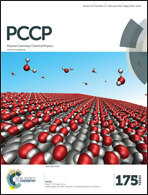The effect of junction modes between backbones and side chains of polyimides on the stability of liquid crystal vertical alignment
Abstract
Polyimides (PI-N9 and PI-N12) were synthesized from two kinds of functional diamines, whose junction modes between backbones and side chains were different. Side chains of PI-N9 were linked to the backbones with an ether bond spacer; and side chains of PI-N12 were directly linked to the backbones without any spacer. The PI alignment layer surfaces were investigated by atomic force microscopy, surface free energy measurements, X-ray photo-electron spectroscopy and polarized attenuated total reflection Fourier transformed infrared spectroscopy. It was found that PI-N9 lost the vertical alignment capability after high-strength rubbing, while PI-N12 could still induce liquid crystals (LCs) to align vertically under the same condition. The mechanism of the macroscopic molecular orientation of the PI surface is proposed. During the high-strength rubbing process, the side chain could rotate around the flexible ether bond which existed between the side chain and the main chain of PI-N9 and then fell over. Therefore, PI-N9 could not induce the vertical alignment of LCs anymore. But PI-N12 could keep LCs aligning vertically all the time, which proved that the stability of LC alignment induced by PI-N12 was better.


 Please wait while we load your content...
Please wait while we load your content...